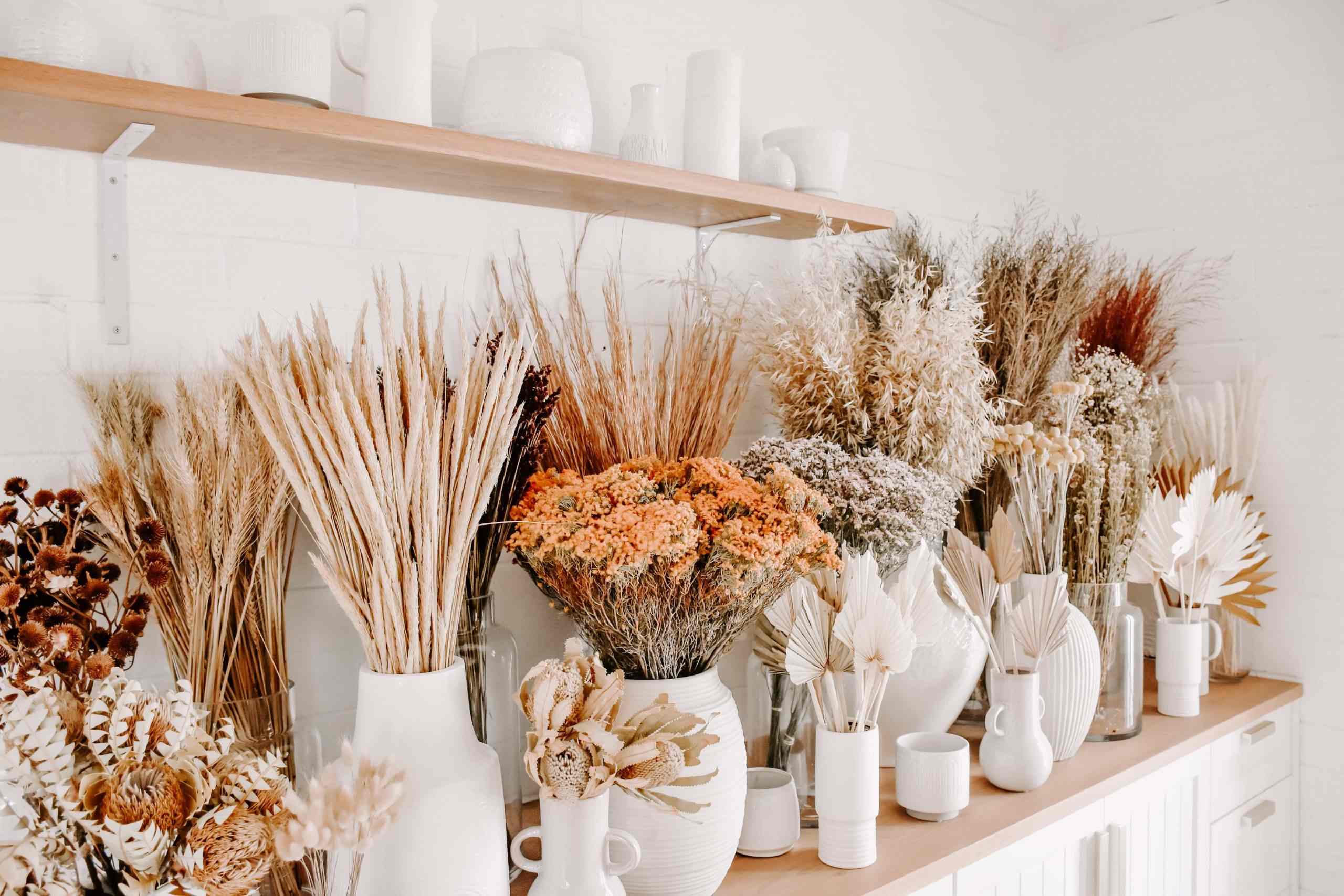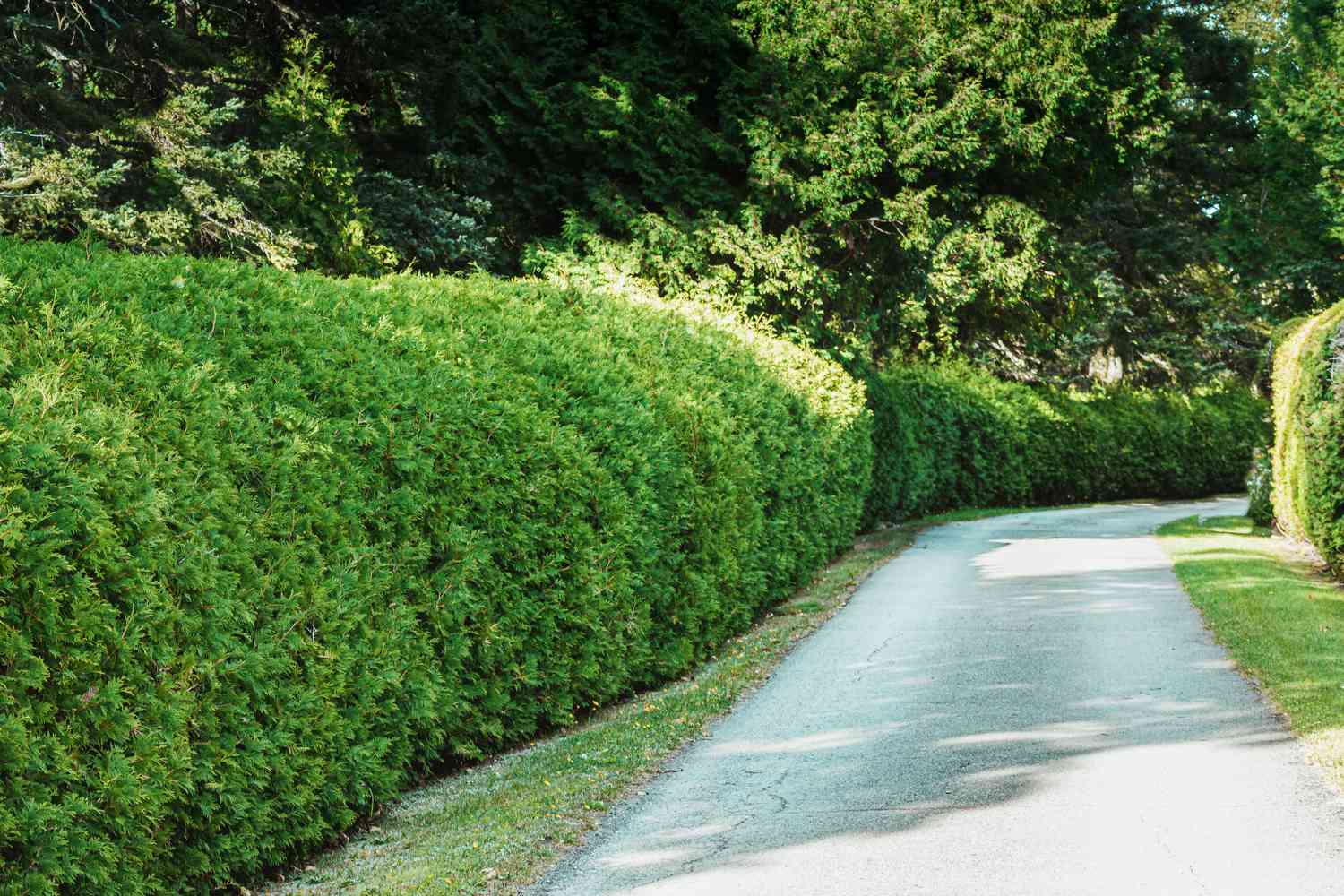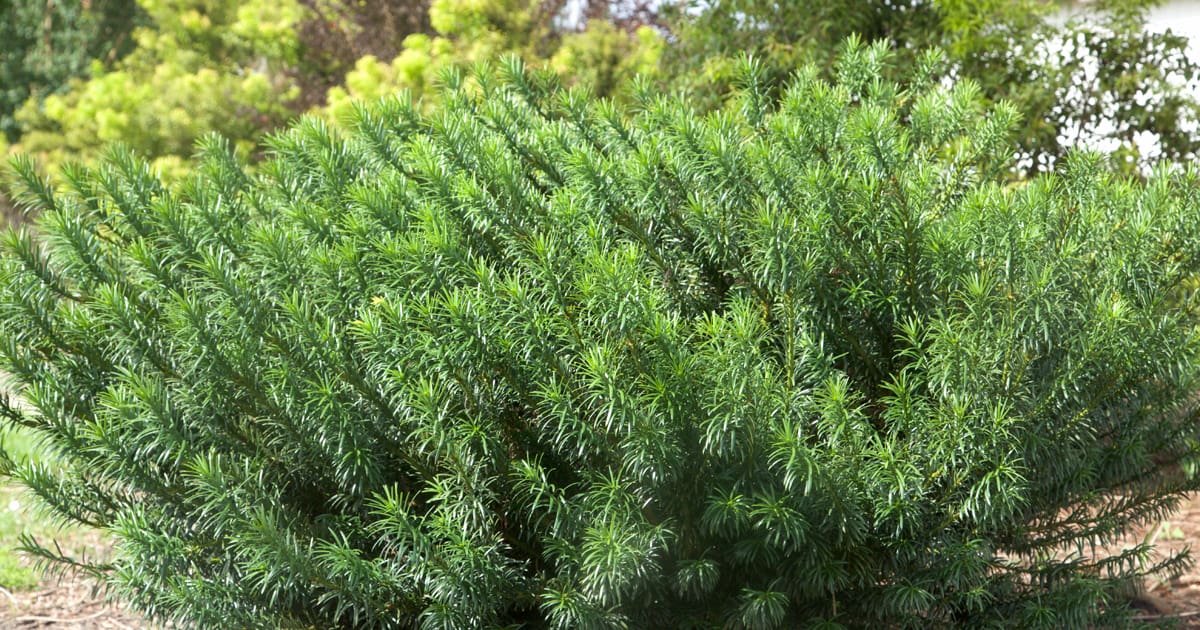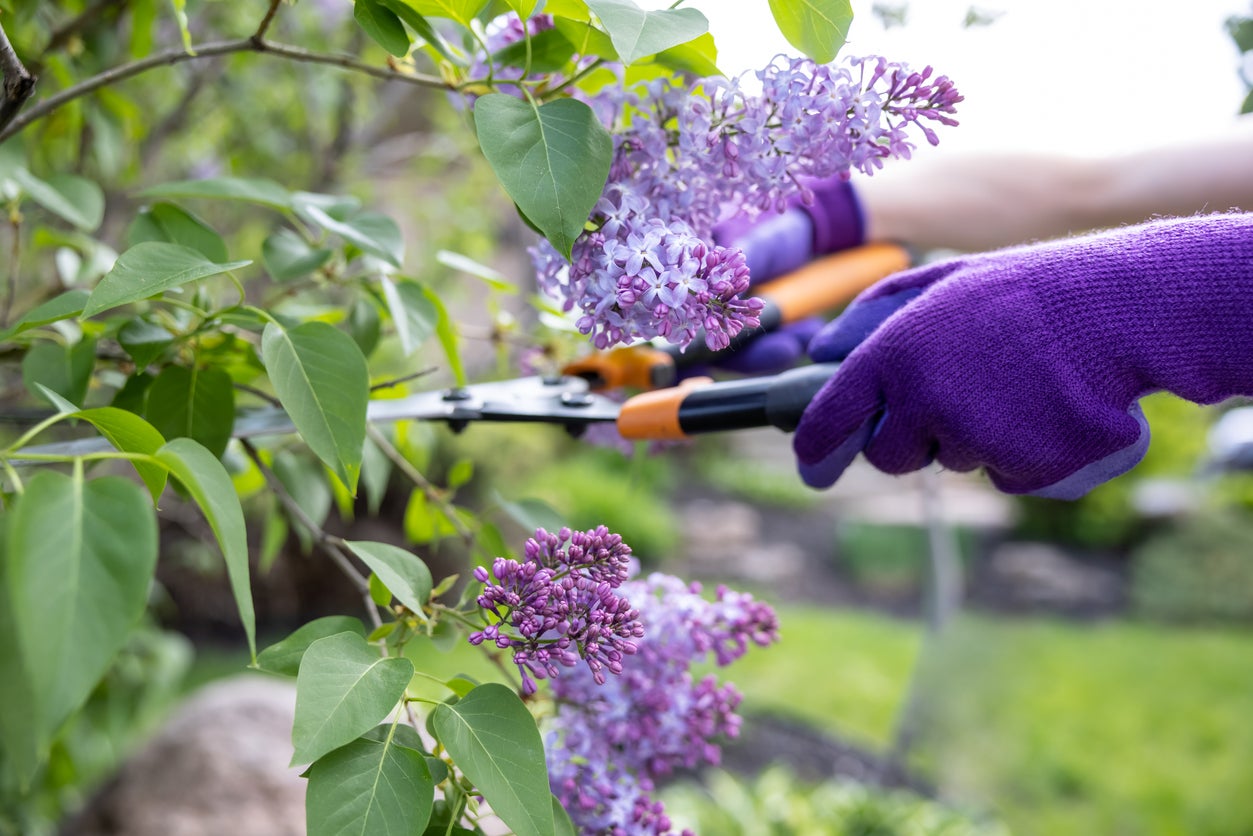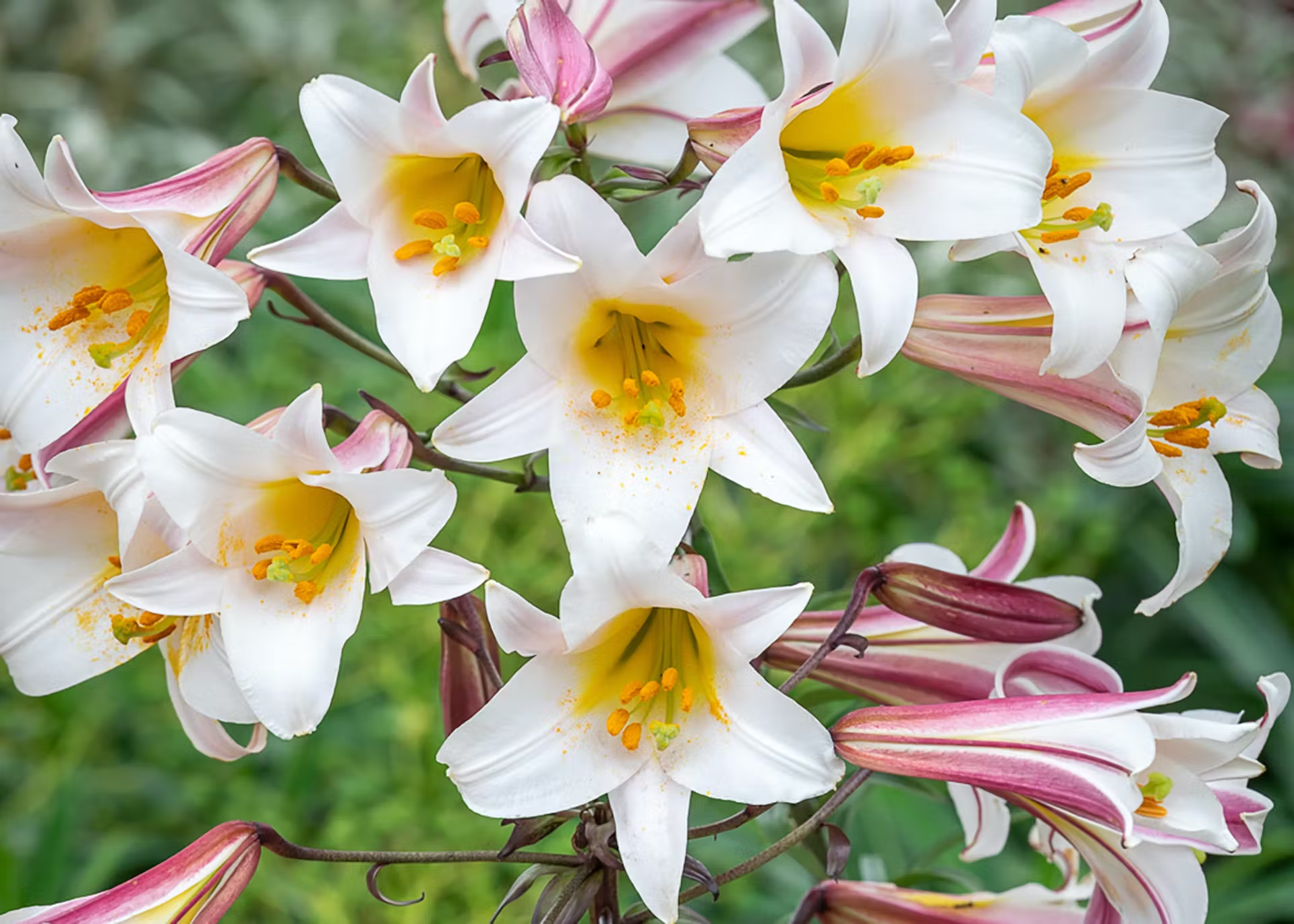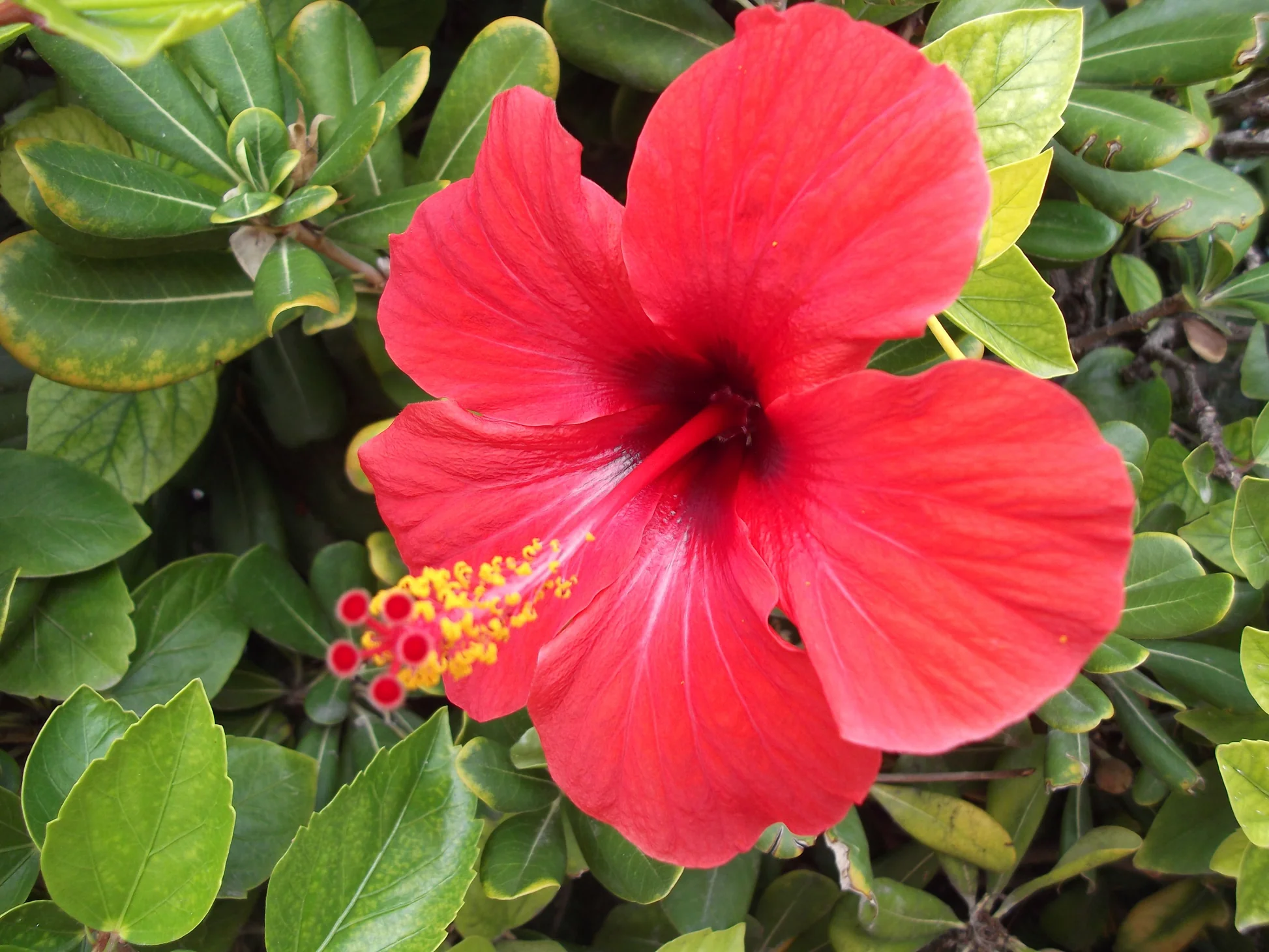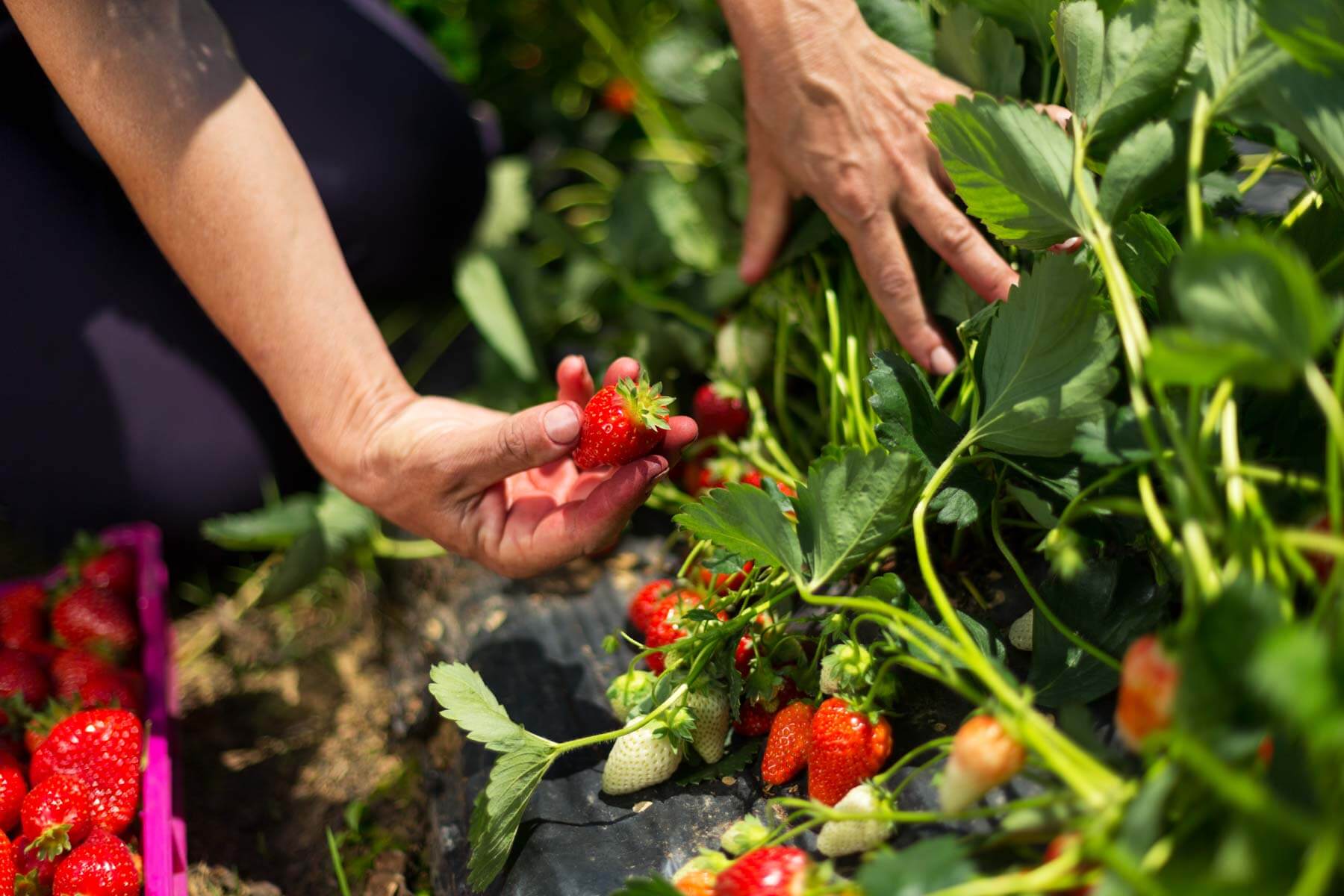Home>Gardening Techniques>Plant Care>When Can I Prune Flowering Shrubs
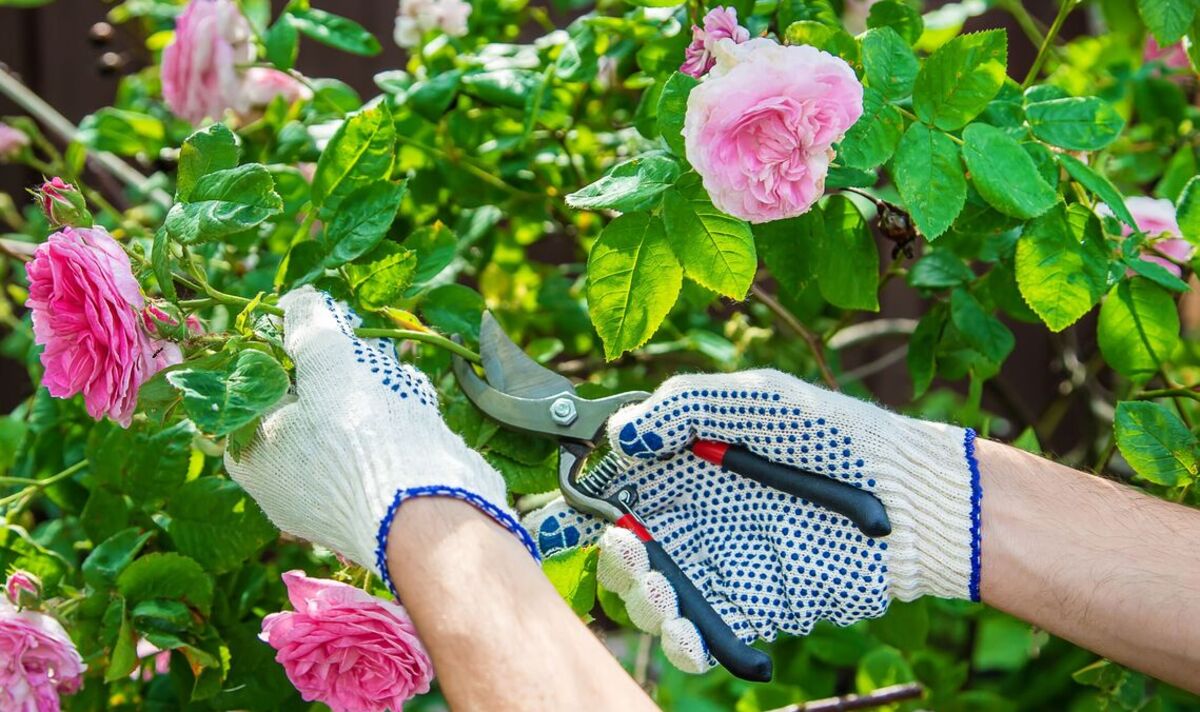

Plant Care
When Can I Prune Flowering Shrubs
Modified: January 22, 2024
Learn when to prune your flowering shrubs and get essential plant care tips. Find out the best time to trim your shrubs for optimal growth and bloom.
(Many of the links in this article redirect to a specific reviewed product. Your purchase of these products through affiliate links helps to generate commission for Chicagolandgardening.com, at no extra cost. Learn more)
Table of Contents
Introduction
Welcome to the wonderful world of flowering shrubs! These charming and versatile plants add color, fragrance, and beauty to any garden or landscape. Whether you’re a seasoned gardener or just starting out, understanding how to care for your flowering shrubs properly is essential to ensure their health and longevity.
One of the key aspects of taking care of flowering shrubs is knowing when and how to prune them. Pruning plays a crucial role in maintaining the shape, size, and overall health of these plants. However, pruning at the wrong time or using improper techniques can have detrimental effects on their growth and blooming potential.
In this article, we will delve into the world of pruning flowering shrubs and answer the fundamental question: “When can I prune my flowering shrubs?”. We will explore the importance of pruning, factors to consider before pruning, the best time to prune, pruning techniques, and essential tips to ensure successful pruning. By the end of this article, you’ll have the knowledge and confidence to prune your flowering shrubs with expertise.
So, grab your gardening tools, put on your gloves, and let’s embark on a journey to discover the secrets of pruning flowering shrubs!
Understanding Flowering Shrubs
Before we delve into the art of pruning flowering shrubs, it’s important to have a clear understanding of what these plants are. Flowering shrubs are woody plants that produce beautiful blooms, typically in the form of flowers, during specific seasons. They come in a variety of shapes, sizes, and colors, making them a popular choice for gardeners looking to add visual interest and vibrant displays to their landscapes.
Flowering shrubs can be deciduous, meaning they shed their leaves during winter, or evergreen, retaining their foliage year-round. Some popular examples of flowering shrubs include azaleas, hydrangeas, lilacs, roses, and viburnums. Each type of flowering shrub has its unique characteristics, including preferred growing conditions, bloom time, and pruning requirements.
Understanding the growth habits of flowering shrubs is essential for successful pruning. These plants produce new growth from various parts, including buds, stems, and branches. Some flowering shrubs bloom on new wood, meaning they produce flowers on new growth that emerges during the current growing season. Others bloom on old wood, which refers to growth that occurred in previous years.
Knowing whether a particular flowering shrub blooms on new or old wood will dictate when and how it should be pruned. Pruning at the wrong time can result in the removal of potential flower buds and reduce the overall blooming potential of the plant.
Furthermore, understanding the natural growth habit and size of a flowering shrub is crucial for maintaining its health and aesthetic appeal. Some shrubs have a naturally compact and rounded shape, while others may grow tall and spread out. Proper pruning techniques can help control the size, shape, and density of the shrub, promoting better airflow, sunlight penetration, and overall vitality.
Now that we have a basic understanding of flowering shrubs and their growth habits, let’s move on to why pruning is essential for their well-being.
The Importance of Pruning
Pruning is more than just a cosmetic practice for flowering shrubs. It is a vital aspect of their care that promotes overall health, vigor, and blooming performance. Here are some key reasons why pruning is important for flowering shrubs:
- Enhancing Flower Production: Pruning allows for the removal of dead, damaged, or diseased branches, which can divert valuable energy and nutrients away from flower production. By eliminating these unwanted branches, the shrub can redirect its resources towards the development of new blooms, resulting in a more abundant and beautiful display.
- Maintaining Shape and Structure: Regular pruning helps shape the growth of flowering shrubs, ensuring they maintain an attractive and well-proportioned form. It allows you to control the overall size, density, and symmetry of the shrub, preventing it from becoming overgrown or straggly. A well-pruned shrub not only looks visually appealing but also integrates seamlessly into its surrounding landscape.
- Improving Air Circulation: Dense shrubs with overcrowded branches can create a humid and stagnant environment, making them susceptible to fungal diseases and insect infestations. Pruning promotes better air circulation within the shrub, reducing the chances of fungal diseases and enhancing the overall health of the plant. Increased airflow also helps prevent the development of mold or mildew on the leaves and flowers.
- Removing Weak or Crossing Branches: Over time, flowering shrubs can develop weak, damaged, or crossing branches that can hinder their growth and obstruct sunlight penetration. Pruning allows you to identify and remove these problematic branches, reducing the risk of breakage, pests, and diseases. This practice also encourages the development of strong and healthy branches, promoting the long-term stability and resilience of the shrub.
- Renewal and Regeneration: Some flowering shrubs benefit from rejuvenation pruning, a technique that involves removing older, unproductive wood to stimulate new growth and improve blooming. By removing old wood, the shrub can redirect its energy towards producing fresh, vigorous branches and vibrant flowers. This pruning technique is particularly helpful for shrubs that bloom on old wood.
It’s important to note that pruning should be done judiciously and with proper technique, as excessive or incorrect pruning can harm the shrub and impede future blooming. Now that we understand the significance of pruning, let’s explore the factors that should be considered before grabbing the pruning shears.
Factors to Consider Before Pruning
Pruning flowering shrubs requires careful consideration of various factors to ensure optimal results. Before you start pruning, keep the following factors in mind:
- Bloom Time: Understanding the bloom time of your flowering shrub is crucial for determining when to prune. Shrubs that bloom on old wood, such as lilacs, should be pruned immediately after they finish flowering. On the other hand, shrubs that bloom on new wood, like hydrangeas, can be pruned in late winter or early spring before new growth emerges. Pruning at the wrong time can result in the removal of potential flower buds and impact the blooming potential of the shrub.
- Growth Habit: Consider the natural growth habit of the shrub before pruning. Some flowering shrubs have a graceful arching habit, while others grow in a more upright or spreading manner. Understanding the natural shape and growth pattern will help you prune the shrub in a way that enhances its overall form and maintains its aesthetic appeal.
- Health and Vigor: Pruning should be focused on removing dead, diseased, or damaged branches to improve the shrub’s overall health and appearance. Assess the shrub for any signs of disease, pest infestations, or weak branches that may need to be pruned. Additionally, if the shrub is experiencing any stress, such as drought or nutrient deficiencies, it’s best to address those issues before pruning to ensure optimal recovery.
- Size Constraints: Take into account the available space and size constraints in your garden or landscape. Pruning can be used to control the size and spread of flowering shrubs, making them more manageable and fitting within the desired space. Consider the final size and shape you want the shrub to be and prune accordingly to achieve the desired results.
- Personal Preferences: Your personal preferences and gardening style also play a role in how you prune your flowering shrubs. Some gardeners prefer a more natural and informal look, allowing the shrub to grow with minimal pruning. Others prefer a well-maintained, formal appearance and may practice more intensive pruning techniques. Understand your gardening aesthetic and goals to tailor the pruning approach accordingly.
Taking these factors into consideration will help you make informed decisions when it comes to pruning your flowering shrubs. Now that we’ve explored these important factors, let’s move on to discover the best time to prune your shrubs for optimal results.
Best Time to Prune Flowering Shrubs
The timing of pruning is crucial for the health and blooming performance of flowering shrubs. The best time to prune depends on the specific shrub’s bloom time and whether it blooms on new or old wood. Here are some guidelines to determine the best time to prune your flowering shrubs:
- Spring-Blooming Shrubs: Shrubs that bloom in the spring, such as lilacs and forsythias, typically produce flowers on old wood. These shrubs should be pruned immediately after they finish flowering. Pruning them too late in the season can result in the removal of flower buds that have already formed for the following year.
- Summer-Blooming Shrubs: Shrubs that bloom in the summer, like hydrangeas and butterfly bushes, usually bloom on new wood. These shrubs can be pruned in late winter or early spring before new growth emerges. Pruning at this time allows the shrub to develop new branches and flower buds that will bloom during the current growing season.
- Fall-Blooming Shrubs: Shrubs that bloom in the fall, such as rose of Sharon and beautyberry, generally bloom on new wood. These shrubs can be pruned in early spring, just before new growth begins. Pruning at this time allows the shrub to develop new branches and flower buds that will bloom in the fall.
- Continuous Bloomers: Some flowering shrubs, like roses and some varieties of crape myrtle, have the ability to bloom intermittently throughout the growing season. These shrubs can be pruned in late winter or early spring, as well as throughout the growing season, to remove dead or spent flowers and promote new growth and subsequent blooms.
- Unruly or Overgrown Shrubs: If you have an unruly or overgrown flowering shrub that requires rejuvenation or significant reduction in size, it can be pruned during late winter or early spring while it is still dormant. This aggressive pruning should be done over a period of a few years, gradually removing old wood to prevent shock to the shrub.
It’s important to note that while the general guidelines for pruning timing are helpful, there may be exceptions depending on specific shrub varieties and regional climates. Consulting gardening references or seeking advice from local garden centers can provide more precise information for your particular flowering shrubs.
Now that we know when to prune, let’s explore some essential pruning techniques to ensure the well-being and longevity of our flowering shrubs.
Pruning Techniques for Flowering Shrubs
Pruning flowering shrubs requires careful technique to achieve the desired results without harming the plant. Here are some essential pruning techniques to keep in mind when caring for your flowering shrubs:
- Sterilize Pruning Tools: Before you begin pruning, it’s important to sterilize your pruning tools. This helps prevent the spread of diseases between plants. Use rubbing alcohol or a diluted bleach solution to clean your pruning shears, loppers, or saws.
- Remove Dead and Diseased Branches: Start by identifying and removing any dead, diseased, or damaged branches. Make clean cuts just above a healthy bud or branch junction. Removing these branches not only improves the overall appearance of the shrub but also helps prevent the spread of diseases and pests.
- Prune for Shape and Size: Use selective pruning to shape and control the size of your flowering shrub. Remove unwanted branches that are crossing, rubbing, or growing inward towards the center of the shrub. Prune back long and leggy branches to encourage bushier growth. Prune just above an outward-facing bud or branch to direct growth away from the center.
- Consider Growth Habit: Different flowering shrubs have different growth habits. Some shrubs have a single trunk, while others have multiple stems or a sprawling form. Take into account the natural growth habit of the shrub and prune accordingly to maintain its preferred shape and structure.
- Encourage Airflow and Light Penetration: Pruning can help improve airflow and light penetration within the shrub, reducing the risk of disease and promoting healthy growth. Thin out dense areas by selectively removing branches. This opens up the interior of the shrub to allow better air circulation and sunlight to reach all parts, stimulating overall vigor.
- Rejuvenation Pruning: Some flowering shrubs benefit from rejuvenation pruning, which involves cutting back the shrub to a height of 6-12 inches above the ground. This drastic pruning technique stimulates new growth and rejuvenates the shrub. It is best done during late winter or early spring while the shrub is still dormant.
- Prune Spent Flowers: For shrubs that produce multiple blooms throughout the season, regularly deadhead or prune off the spent flowers. This encourages the shrub to redirect its energy towards producing new blooms and extends the flowering period.
Remember to step back and assess your shrub after each pruning cut to ensure you’re achieving the desired shape and size. Avoid pruning more than one-third of the shrub’s total canopy in a single season, as overly aggressive pruning can stress the plant and impact future blooming. If you’re unsure about certain pruning techniques, seek guidance from gardening resources or consult with local experts.
Now that we’ve covered the essential pruning techniques, let’s explore some additional tips to ensure successful and healthy pruning of flowering shrubs.
Tips for Proper Pruning
Proper pruning techniques are essential for maintaining the health, shape, and blooming potential of flowering shrubs. Here are some helpful tips to keep in mind when pruning your shrubs:
- Use Sharp and Clean Tools: Ensure that your pruning tools are sharp and in good condition. Dull blades can cause uneven cuts and damage to the branches. Additionally, clean your tools before and after each use to prevent the spread of diseases between plants.
- Prune on a Dry Day: Choose a dry day to prune your flowering shrub. Pruning when the plant and the environment are dry helps minimize the risk of spreading infections or diseases.
- Prune for Size and Shape: Consider the desired size and shape of your shrub before pruning. Visualize how you want it to look in your garden or landscape and prune accordingly to achieve that form.
- Take Your Time: Pruning is not a task to rush through. Take your time and step back frequently to assess the progress and shape of your shrub. Make deliberate cuts to ensure you’re achieving the desired outcome.
- Prune After Bloom: For shrubs that bloom on old wood, such as lilacs, prune them immediately after they finish flowering. This allows the shrub to set new flower buds for the next season.
- Avoid Over-Pruning: It’s important not to over-prune your flowering shrubs. Removing more than one-third of the shrub’s total canopy can stress the plant and reduce its blooming potential. Prune selectively and gradually, focusing on removing dead, diseased, or crossing branches.
- Consider Seasonal Constraints: Be aware of any seasonal constraints that might impact the health and blooming of your shrub. Avoid pruning too late in the season, as it may remove the flower buds for the following year. Prune at the appropriate time to allow the shrub to recover and prepare for the next growing season.
- Monitor and Adjust: Regularly monitor the growth of your flowering shrubs throughout the year. Adjust your pruning techniques as needed to maintain the desired size, shape, and health of the shrubs.
Remember, pruning is an ongoing process, and it takes time to understand your specific shrubs’ pruning needs. Observing and learning from your shrubs’ responses to pruning will help you refine your techniques and achieve the best results.
Now that we’ve covered some essential pruning tips, let’s explore some common mistakes to avoid when pruning flowering shrubs.
Common Mistakes to Avoid
While pruning is an important aspect of flowering shrub care, it’s essential to avoid certain common mistakes that can negatively impact the health and appearance of your shrubs. By being aware of these mistakes, you can ensure successful pruning. Here are some common mistakes to avoid when pruning flowering shrubs:
- Pruning at the Wrong Time: Pruning at the wrong time can significantly affect the blooming potential of your shrubs. Be sure to research and understand the specific pruning requirements of each shrub variety, considering whether it blooms on old or new wood, and prune accordingly.
- Over-Pruning: Avoid the temptation to over-prune your flowering shrubs. Removing too many branches can stress the plant, weaken its growth, and reduce its blooming potential. Remember the one-third rule, and prune selectively, focusing on dead, diseased, or crossing branches.
- Haphazard Pruning: Randomly cutting branches without a clear plan can result in an unbalanced or misshapen shrub. Take the time to step back, assess the overall form, and plan your cuts to achieve the desired shape and structure.
- Improper Cutting Technique: Sloppy or improper cutting techniques can lead to jagged cuts, damaged bark, and increased risk of disease. Ensure that your cuts are clean, made just above a bud or branch junction, and angled away from the shrub to facilitate healing and promote new growth.
- Pruning During Active Growth: Pruning during periods of active growth, such as late spring or summer, can disrupt the shrub’s natural growth process and potentially lead to excessive bleeding or damage. Stick to pruning during dormancy or immediately after the shrub has finished flowering.
- Ignoring Plant Health: It’s important to address any underlying health issues before pruning your shrubs. Pruning should not replace proper care and maintenance practices, such as watering, fertilizing, and pest control. Ensure that your shrubs are in optimal health before proceeding with pruning.
- Pruning for Aesthetics Only: While aesthetics are an important consideration, remember that pruning should also prioritize the overall health, vitality, and functionality of the shrub. Overemphasis on appearance alone can lead to excessive or unnecessary pruning that may harm the plant.
- Not Seeking Guidance: If you’re unsure about pruning techniques or the specific requirements of your shrubs, don’t hesitate to seek guidance from gardening references, online resources, or local gardening experts. Their knowledge and experience can provide valuable insights and ensure that you make informed pruning decisions.
By avoiding these common mistakes, you can effectively enhance the health and appearance of your flowering shrubs through proper pruning techniques.
Now that we’ve covered common pruning mistakes, let’s wrap up our exploration of pruning flowering shrubs.
Conclusion
Pruning is a vital practice for maintaining the health, shape, and blooming potential of flowering shrubs. By understanding the specific needs of your shrubs and employing the proper techniques, you can ensure their long-term success in your garden or landscape.
Before pruning, consider factors such as the bloom time, growth habit, and health of the shrub. This knowledge will help guide you in determining the best time to prune and the appropriate pruning techniques to use. Remember to prune selectively, removing dead, diseased, or crossing branches while maintaining the shrub’s natural shape and size.
Proper pruning enhances flower production, maintains the desired shape and structure, improves airflow and light penetration, and stimulates new growth. However, it is crucial to avoid common pruning mistakes such as over-pruning, haphazard cuts, improper timing, and neglecting plant health.
Take your time, observe your shrubs’ responses, and adjust your pruning techniques as needed. Seek guidance when unsure, and continually monitor the growth and condition of your shrubs throughout the year.
Remember, pruning is an ongoing process that requires patience and understanding. With the right approach, you can enjoy the beauty and vitality of your flowering shrubs for years to come.
